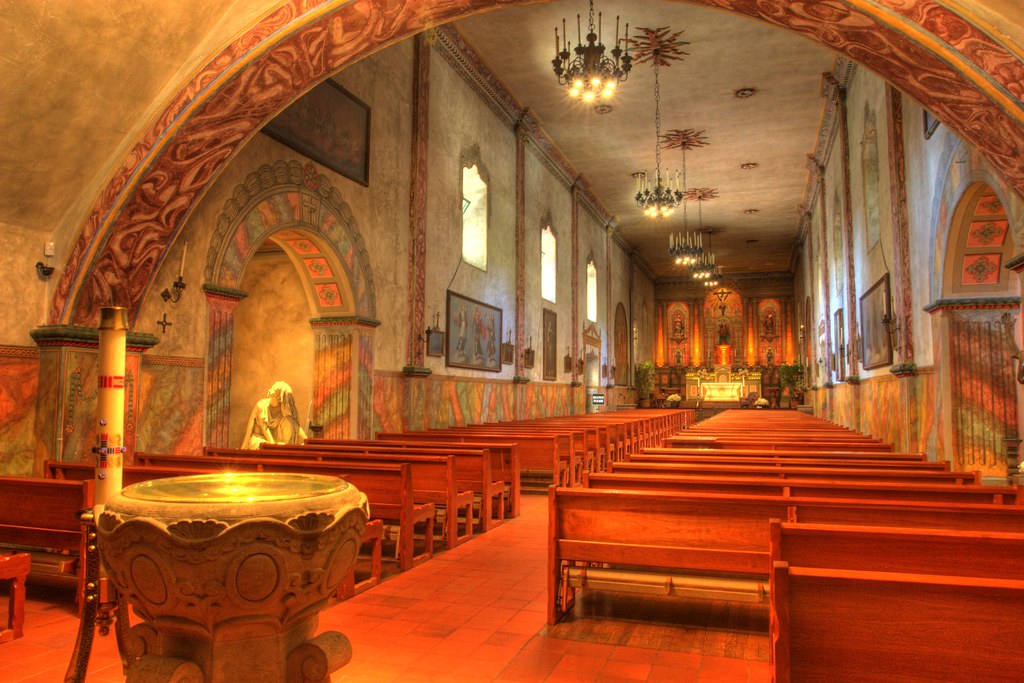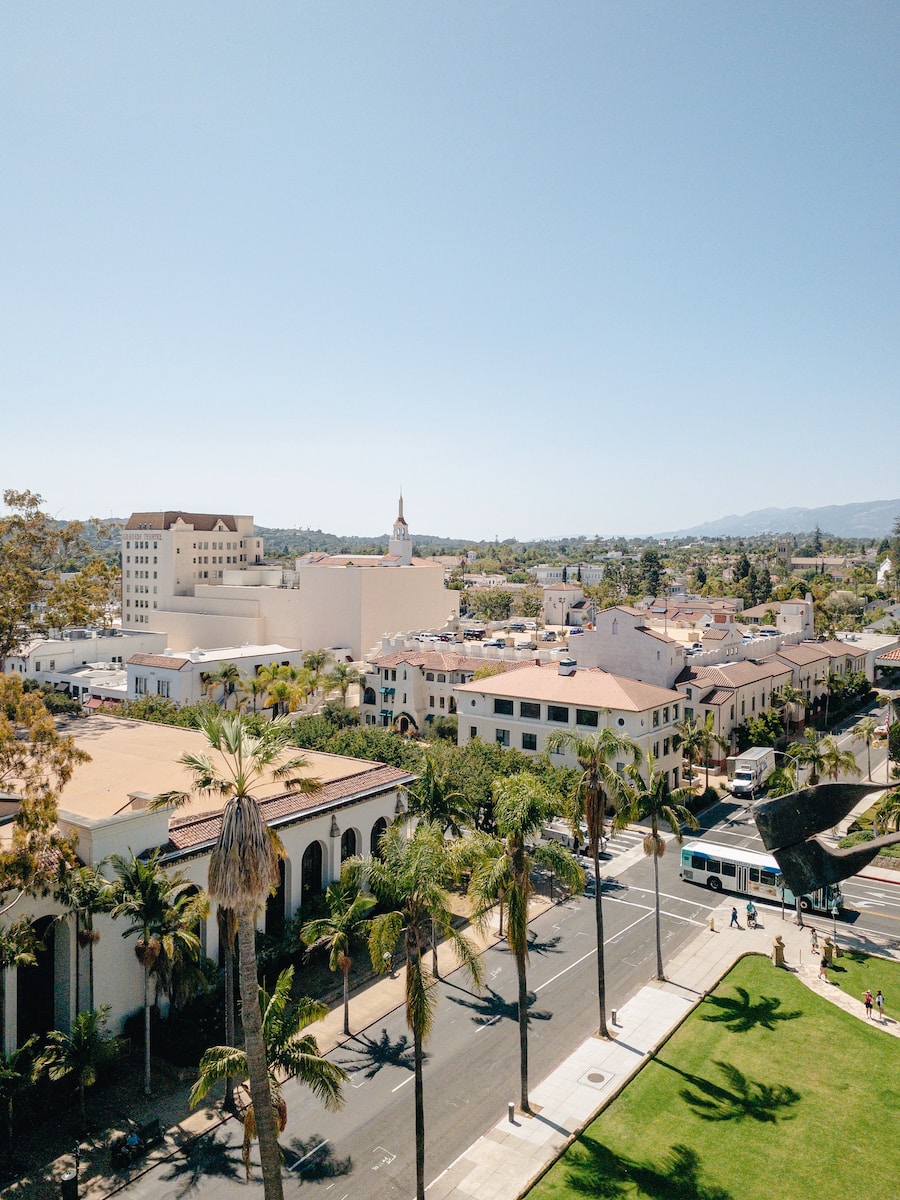
The Old Mission Santa Barbara stands as a testament to the Franciscan tradition. Following in the footsteps of St. Francis, prioritizing hospitality, respect all people and honor creation. This is a place of joy, learning and spiritual contemplation where everyone is welcome.
Established on the 4th of December 1786 by Fermin Francisco de Lasuen in Feast of St. Barbara, the Mission was the tenth of the California Missions to be founded by the Catholic Church. The main purpose of the missions was to spread Christianity among the Native Americans and to convert them to Catholicism. The mission was intended also to serve as a physical and spiritual barrier between Spanish and non-Spanish colonial settlements. In addition to its religious and military functions, the mission also played an important role in the economic development of Alta California.
After Mexico won independence from Spain in 1821, the mission became a Mexican government-run rancho. In 1848, after the United States annexed California from Mexico, the mission once again changed hands and is now owned by the Catholic Church. In almost 200 years since its founding, Mission Santa Barbara has undergone many changes.
Two large earthquakes nearly demolished the Queen of the Missions: the first in 1812, was the incitement for the building of a new and stronger church; the second, in 1925, was much more destructive and required a lot more reconstruction. Before the present church was erected in 1820, three churches were constructed here. These earlier churches were most likely constructed of materials that were readily available at the time, including adobe bricks and wood. However, the current church structure is made of more durable materials, such as stone and mortar.
Post-secularization
After the Mexican secularization Act of 1833 was passed by the Mexican Congress it began the process of secularizing the missions. This meant that the missions would no longer be run by the Catholic Church, but would instead be run by the Mexican government. Many Native Americans who lived in the missions were opposed to this change, as they had come to rely on the Catholic Church for their livelihoods. However, the secularization of the missions was ultimately unsuccessful, and many of them were eventually re-established by the Catholic Church. Father Presidente Narciso Durán wanted the headquarters of the missions to be in Santa Barbara so that he could keep some 3000 authentic documents that had been scattered through the California missions.
In 1840, the Diocese of Sonora was divided and the parts of Alta California and Baja California Territory became the new Diocese of Both Californias. This marked an important moment in the history of Catholicism in California.
On March 18, 1865, President Abraham Lincoln reinstated the missions to the Catholic Church. This act allowed the Catholic Church to own and operate the missions in California once again. The missions had been taken away from the Church during the Mexican-American War in 1848. The Mission leader had an argument with the Bishop about whether the Mission should be under the control of the Franciscan order or the diocese.
The Mission has been an important part of the community for over 200 years. The community of Old Mission Santa Barbara is made up of many different parts. Each part contributes to the whole, and together they create a unique and special place. The history, architecture, and natural beauty of the mission are just a few of the things that make it so special. The people who live and work here are also an important part of what makes this community so great.
The Old Mission Santa Barbara was the center for the Franciscans and played an important role in education in the late 1900s and early twentieth century. The Franciscans ran a school at the mission, which educated Native American children from nearby villages. In addition, the Franciscans also taught agricultural techniques to the Native Americans, which helped them to become self-sufficient.
Today’s Mission
At this day, the Mission operations not only include a museum and gift shop, but also a cemetery and mausoleum. In addition, there are several historic gardens on the property that are cared for by the Franciscan Friars. The community of Franciscan Friars who live on the property take up about 15 acres. The Mission grounds offer stunning views of the city and the ocean, and there are plenty of activities to keep visitors entertained.
The Mission also holds the beautiful and historic Santa Barbara Mission-Archive Library. It was founded in 1786 and has been serving the community ever since. The mission is renowned for its extensive collection of books and documents, which offer a wealth of information about the history of Santa Barbara and the surrounding area. Visitors can also enjoy the stunning views from the mission’s grounds.
The sources of the Library’s collections can be traced back to the 1760s, when Fray Junipero Serra began making plans for missions in Alta California. Over the years, these missions acquired books and other materials from a variety of sources, and eventually some of these materials made their way into the Library’s holdings. Thus, the Library’s collections offer a unique perspective on the history of early California.
The Old Mission in Santa Barbara is world-renowned for its choral singing. The two choirs that provide music for the weekly Catholic liturgy are the California Mission Schola and the Cappella Barbara. The Mission Schola specializes in Renaissance polyphony, while the Cappella Barbara focuses on more modern repertoire. Both choirs rehearse on Wednesdays and sing at the Sunday morning Mass. It is also home to a boys’ choir, which sings at Sunday Mass and other religious ceremonies throughout the year. The boys’ choir has performed for Pope John Paul II, President George W. Bush, and other dignitaries.
The Mission archives are a rich source of colonial Franciscan music. The collection includes both religious and secular music, as well as a wide variety of musical styles. The documents and recordings in the archive provide valuable insights into the musical traditions of the Franciscan order, as well as the broader history of music in the colonial Americas.
The Mission Santa Barbara is a historic site that preserves the rich cultural heritage of the Santa Barbara area. The mission offers a unique perspective on the past and remains an invaluable resource for the Santa Barbara community. Visitors can explore the abundance of historical treasures at the mission, including the beautiful gardens, old adobe buildings, and stunning artwork.
Indeed, the Mission Santa Barbara is a must-see destination for anyone interested in learning more about the history and culture of California.


0 Comments